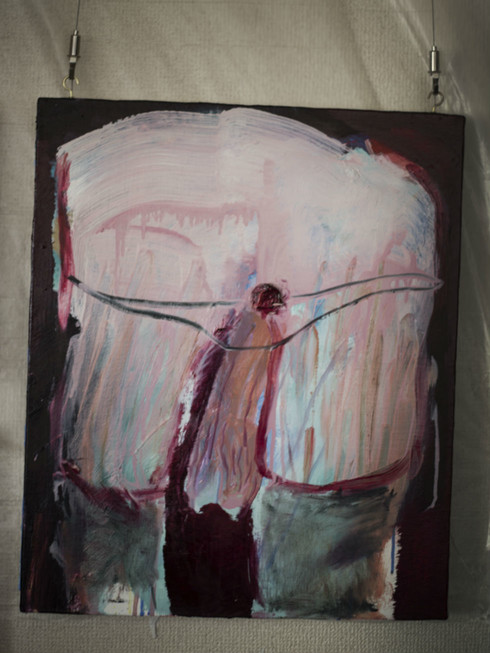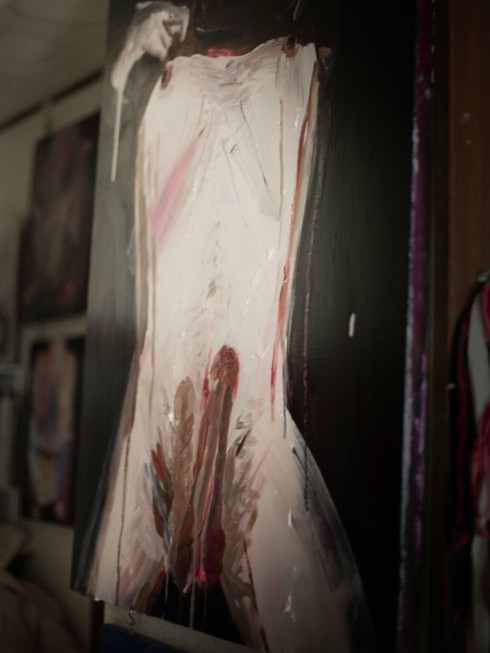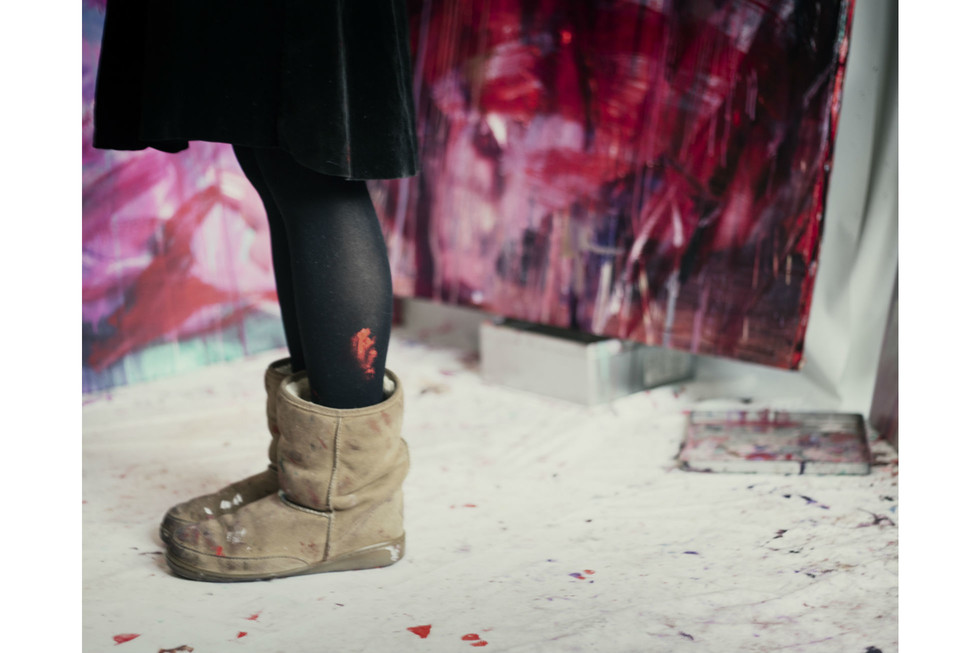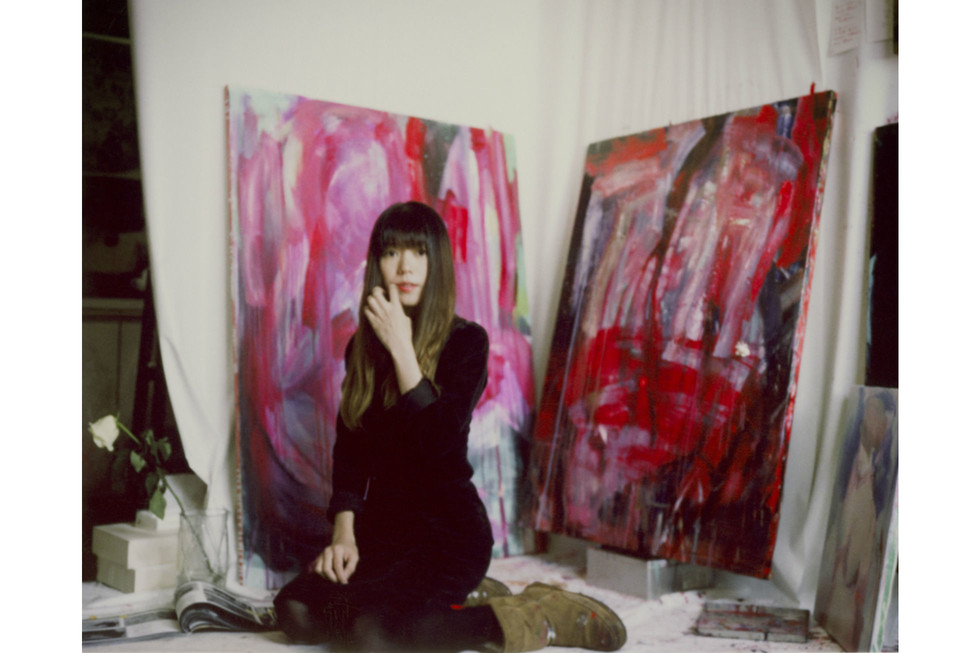THE EXTRAORDINARY WORLD OF CHRISTIAN TAGLIAVINI
Written by Ksenia Rundin‘The Extraordinary World of Christian Tagliavini’ invites us into the world of a photographer, who with the mind of an architect, creates unimaginably intricate and meticulously calculated silhouettes, and with the precision of a watchmaker, places every tiny detail into its own aesthetic space, bestowing his audience with a true historical and fashion experience wrapped in the imaginative lustre of the postmodern times. Christian Tagliavini is the artist, who turns photography into a complexed architectural process of planning, researching, designing and constructing an artwork, what at the same time is also extremely exciting. The eye is making its own voyage, bringing the mind along, while discovering new references, admiring new lines and applauding to new ideas. In his artworks, the rigidity of the architectural language is alleviated by the plenitude of historical allusions and embellished by the inscrutable enigma of fashion connotations, accommodated by the immaculacy of the craftsmanship.
Going from Machiavelli to Jules Verne, from Il Bronzino to Modigliani, you create your own imaginary world, filled with abounding references, adhering to the spheres of art, fashion and engineering. From a passive beholder, you suddenly become an emotional co-creator, taking Christian Tagliavini’s stories into your own ingenious plane of your now roused imagination. The combination of different devices and 3D technology, intellectually engages you into something imaginary that might never have existed, and through the immersive sensations leading you further to a kind of splice of the existed knowledge and a self-constructed augmented reality. Henceforth, the exhibition is a unique celebration of Italian stringent splendour with its clear architectural lines, befuddled by the playfulness of mind, curiosity of history, versatility of fashion and flamboyance of art. Tomorrow the exhibition leaves Stockholm to conquer new horizons, but the experience will stay with us like the aftertaste following a sip of vintage Barolo Monfortino Riserva.
What did you do before becoming a photographer? And what made you change your career?
Before becoming a photographer, I studied engineering and architecture and ten years later graphic design was discovered. Then I started working as a graphic designer for a big publishing house in Italy. Nevertheless, the graphic design as such did not completely satisfied my creative side. Suddenly, I realised that I merely was a number in a big space among other graphic designers.
Photography I have actually discovered by accident, while attending a solo exhibition of Patrick Demarchelier. At that moment something happened in my mind – I was captured not by the image as such but by its impeccable quality. It was that carefully performed back-and-white printing that conquered me. Exactly one month later, I bought my first medium format camera and started playing, photographing different objects, like still life, architecture and also people in the street, asking them to pose for me for free.
In 2004 I discovered Mise-en-scen Photography through the works of Erwin Olaf and Gregory Crewdson. It is a strange type of photography, called in America ‘one-shot movie’. And I started taking my first steps in two series of photographs, inspired by another photographer and using a wallpaper - a work someone had done before me. Thus, in 2008 my first series ‘Dame Di Cartone’ was conceived, what also helped me to discover my personal identity in photography. Each new series helps me to explore more and more within myself and strengthen my own voice, establishing my personal signature in this type of art. It is not easy for me as my identity is very important for me and I try to re-discover it every time I start a new series. I try to do as much as I can by myself, besides tailoring. Otherwise, I work as a carpenter, engineer, designer – everything from tiny details to big parts. Photography has completely changed my creativity and my perception of this world. When freelancing, you give to the client all your creativity concentrated in the final result, which client can transform by moving some details. Meanwhile, in photography you cannot change anything, after the picture is taken, it is all there.
When did you realize that photography was that something you were looking for in life?
I think in 2011, when, after having created three series as a Mise-en-scen photographer and still working as a graphic designer, I received an invitation to Paris Photo [the largest international art fair dedicated to photographic medium] not as a visitor, but as an artist, I understood that the direction had already been chosen. All of a sudden, I realised that I had already hit the photography market with three series of successful photographs. Hence, I quit the graphic design and comprehensively dedicated myself to photography.
Every detail in your work is unique, whether it is the wallpaper in the background of a photograph or some mysterious headgear. The face expressions in your photographs in the series “1503”are very hard to comprehend. Is it the mystery of the face you are looking for, as a fuel for your creativity engine?
The series ‘1503’ were growing in a peculiar way, because the beginning constituted my first steps in the stage photography. Today I methodologically use a study board to decide colours, pose and dress but by then, I had no idea how to do such photographs. Nevertheless, the series is inspired by two artists and the epochs they lived in, where the first one is the Florentine Mannerist painter Agnolo Bronzino (1503-1572), to whom I pay homage in my artworks. The other one is the Italian painter and sculptor Amedeo Modigliani (1884-1920). In this sense, two Italian painters, belonging to two different art eras meet in my works, where I, by using mechanical trick, compound the photography and photoshop. If you observe the paintings of the past, you could recognize that no one is smiling on them, because the painting supposed to instill a sense of power into the beholder. The same trend you could see in the photographs of the first era of photography, by the end of the 19th Century. Thus, this is the mystery in my photography.
What do you enjoy the most, the result as such or the process of creation, while mastering your own space?
It is a good question, where the official answer is both. Every time I start with a new series, it is a huge fun to make new discoveries, realizing new things as for instance 3D technology, which I used for the last project, materializing the quality of 3D printing. In connection to the project, I even attended a 3D fair to gain knowledge and ideas surrounding the technology. Challenges I meet ‘behind the scene’, while beginning a new project, create a great dose of excitement in my mind. Furthermore, I spend a lot of time making research in order to avoid any bloopers in my works. Everything should be on its place the way I want it to be.
How do you decide what series you want to create, what theme to start playing with?
The ideas strike me in various ways. For example ‘Dame Di Cartone’, inspired by cubism, is based on the interplay of the 3D technology and two-dimensionality of the cardboard. I happened in a tailor shop, when the tailor brought me a piece of fabrics that turned to be quite rigid, reminding a piece of cardboard. It made me think and after a while, sitting in the car, I started discoursing about the relationship between 3D and 2D. That is how the idea of the cardboard dresses for the series was born. Another story concerns the series ‘Voyages Extraordinaires’, devoted to the theme of journey and traveller, inspired by the famous French poet and novelist Jules Verne. In other words, each series has its own source of inspiration acquired either by accident or through a certain scientific research.
Could you describe the clothing creation process in general stages? Do you do the whole work from the sketch to the completed look?
In the last three series the process turned to be all the same, because I could establish my own method for approaching a new project. First, I and my colleague Paola spend a lot of time to research things around the idea we have, what constitutes a significant part for me prior to any concrete work such as a sketch or a storyboard. I need to know the era I am working with, whether it is the end of the 20th Century or the Renaissance, as it is important in order to avoid any mistakes. When I have acquainted myself with all the details, I move over to sketching, inspired by iconographic research that I already have in my mind. My aim is not to make a reproduction of the past but to create my own interpretation of it, inspired by the latter. It is the period when my creativity is completely free. Later, we create a storyboard in black and white, which I hand over to Paola with instructions concerning for example the colour and quality of the fabrics we are using or of any details that we are going to put into the composition. Meanwhile, we are looking for a model. Previously, I could just find a model on the street with exclusion for children, where we always go through model agencies. Today, people are walking with their faces hidden by smartphones, what makes it difficult for me to see the faces. Thus, I use social media such as Facebook, to find a right model. Finally, we prepare the shooting and take a picture.
Would you say that you combine architecture with fashion in your works, where fashion could be seen from a historical perspective?
I used to make a joke, calling myself a fashion designer. When I work with a certain era, I usually have a book describing fashion during that era, which undoubtedly inspires me, modifying my creativity and resulting in a sketch for a dress I later place in the composition. I do everything by myself but the dress as such would be sewn by a tailor, based on the sketch I have provided. Thus, the tailor materializes my dress idea into a real object.
What do you think architecture and fashion have in common based on your experience?
I think that some fashion creations are well architected that they become art objects. The definition of architecture such as artistic elaboration of the structural, functional and aesthetic elements of the building can also be used for dress as the final result. In every era fashion has changed those structural, functional an aesthetical references in accordance with the premises given under the period.
Have you had any fashion collaboration with designers or fashion magazines? Any in future?
Not yet, but I had a chance to work with a seamstress and tailor and could appreciate their knowledge of techniques, tips and tricks.
Could you please describe how you got the ideas for the design of your futuristic headgears?
For the series ‘1406’ I was inspired by 1300 and 1400 paintings and ‘re-visited’ them with my ideas. As I mentioned before, prior to jumping into the design process and technical drawings, I do research of the period. For example ‘La Moglie dell’Orefice’ refers to the painting of ‘Sant'Eligio nella bottega di un orefice’ [St Eligius in His Workshop] (1449) by Petrus Christus.
Are you inspired by haute couture? Any preferences there?
I try to find references of the period that I want to include into my project. Without making any reproduction, I try to follow the historical period but combine the latter with more modern materials and technologies. I can remember some fashion exhibitions that I visited and where the dresses really moved me in the way works of art could do. Talking of recent fashion, I remember an exhibition of dresses of Roberto Capucci, where I was impressed by the ability to combine the possibility of wearing a dress and the complexity of constructing the latter. The dresses seemed to look like sculptures. Another story is the exhibition of Gianfranco Ferré ‘The White Shirt According to Me’, where I could perceive his technical research to get to those results. I also remember a wonderful exhibition in Bilbao celebrating Armani. I would like to learn, see and admire more.




























